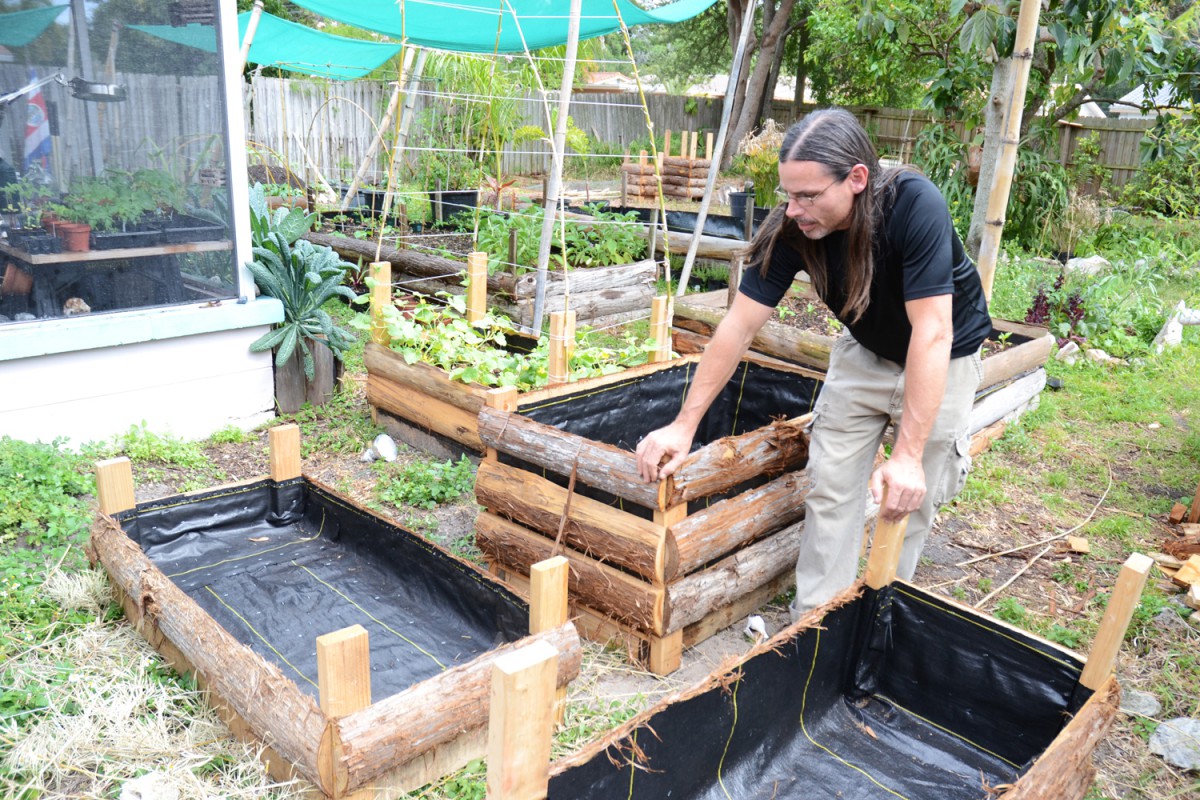Nic Weathersbee decided he didn’t just want to make a product for profit anymore. “I wanted what I do for a living to actually help move humanity in what I believe to be the right direction,” he said.
That direction was gardening. Weathersbee’s vision of harvesting enough of one’s own food to eat, and teaching others to do the same, flourished into a business.
About four years ago, the founder of Urban Micro Farms began growing his own vegetables due to his increasing dissatisfaction with the quality of the produce at local supermarkets. Weathersbee’s biggest concerns were genetically modified foods and pesticides.
“The vegetables are waxy, tasteless for the most part, have no smell, and a suspiciously long shelf life, and often picked green,” he said. “There is a perfection seen in the grocery aisle that is disturbing, because nature isn’t perfect. When I see perfectly identical vegetables, individually wrapped in plastic, coming from unknown genetics, with unknown amounts of pesticide residue on it, I keep walking.”
This produce perfection was the spark that ignited the fourth generation St. Petersburg resident’s idea for Urban Micro Farms.
The only way Weathersbee could be sure of what he was putting into his body was to grow as much of what he eats as possible. “So I started putting up raised beds,” he said.
He sees numerous benefits to growing one’s own produce.
“It helps reduce a person’s carbon footprint, heals the land and animals—no pesticides, blooms everywhere, all organic—and brings humans closer to nature and its cycles,” he said.
Weathersbee said anyone can start gardening. All it takes is intention and commitment.
The raised beds can be installed just about anywhere. Weathersbee explained the raised beds normally are placed directly on the ground in a customers yard, however the customer doesn’t need open ground to have a raised bed. “We can place them on concrete or asphalt just as easily,” he said. They will also require at least a partial source of sunlight to grow.
“If the roof of a structure can hold the weight, we can install [the raised beds] on the roof, the sides of houses, back yards, front yards, even decks and porches for those that do not have yards,” he said.
Limited space would not prohibit production. Weathersbee said he has vertical gardens that are able to grow five to 10 plants.
Prices for an urban micro farm start at $100 for a mobile mini bed (a transportable raised garden), $250 for a stationary starter bed, and $600 for a 16-foot-by-4-foot deep bed that is two feet deep. Because different customers have different needs, Weathersbee said any size bed can be made. Rooftop gardens, vertical gardens and entire lots are just a few of the available options for growing produce.
He sees potential beyond residential gardening. “I hope to convince local restaurants to put up little beds to augment the produce they buy,” he said.
Weathersbee, who has owned the Global Candle Gallery at the Pier for 12 years, said although he wants to make a living showing people how to grow their own food, if someone reaches out to him with limited funds, he will still help them get going in less expensive ways.
“The goal is to bring food production local—free of pesticides, herbicides, GMOs and chemical fertilizers,” he said.
In the future, he said his goal is to have the first all organic garden center. He would like to sell products like organic, non-GMO seeds; organic compost and soil; organic pest control; lead-free hoses; soil amendments; American-made tools; and garden beds, and also have classes once a week.
Weathersbee believes an individual’s daily care and commitment are what will sustain a strong and productive garden.
“If someone doesn’t get a certain amount of pleasure from doing something, they probably shouldn’t be doing it,” he said. “I have a hard time seeing an angry gardener for some reason. Gardening makes you happy.”
For more information, visit facebook.com/urbanmicrofarms.
Photo by Daniel Mutter




0 thoughts on “Urban Micro Farms: Green living, clean living”